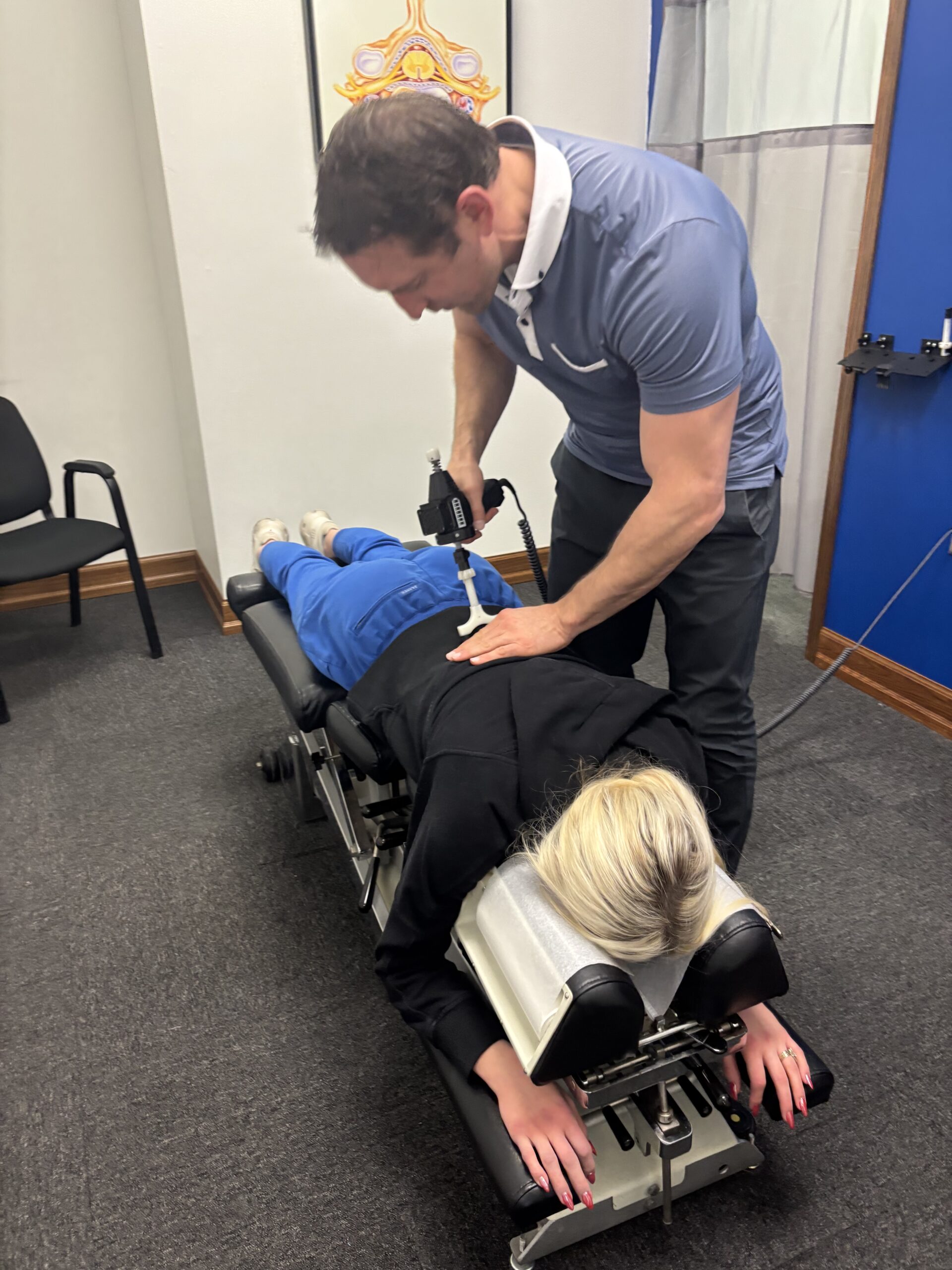When you hear the word “chiropractor” does your first thought include the image of bone cracking or does the sound of bones cracking fill your head? The relief that comes from the sound is sometimes just as soothing as the actual treatment. We call those treatments a “manual chiropractic” adjustments. But not everyone’s body can handle a manual adjustment so today we are exploring the different chiropractic options available and reasons one may be a better fit for your needs than another method.
Traditional chiropractic techniques involve the doctor using quick thrusts at the end of the affected joint’s range of motion. These thrusts create the “adjustment” that often comes with the sound of cracks and pops so many of us correlate with chiropractic care. {Fun fact: those sounds are actually the release of gas in the joints.}

When traditional chiropractic is not an option, chiropractors often use tools called an “Activator” or an “Arthrostim.” They may look and the name may sound similar but that is where the similarities end.
An Activator tool uses single pulses to deliver the chiropractic treatment. It is a spring-loaded device that can be used to treat headaches to lower back pain issues. Many patients are more relaxed when anticipating an adjustment with an activator as opposed to a manual adjustment.
An Arthrostim tool is a similar device to an Activator in the way it looks and in that doctors can use it instead of doing a manual adjustment. This device uses high-speed yet gentle force to deliver up to 40 pounds of force per thrust. The Arthrostim’s rapid delivery of force (12-14 thrusts per second) allows our doctors to target a specific area of the body, which means we are able to precisely treat patients with the goal of long-term relief.
At Dynamic Spine & Neuropathy, we use a combination of therapy techniques including whole body vibration, a decompression chair, and cervical traction to complement the Arthrostim tool.




